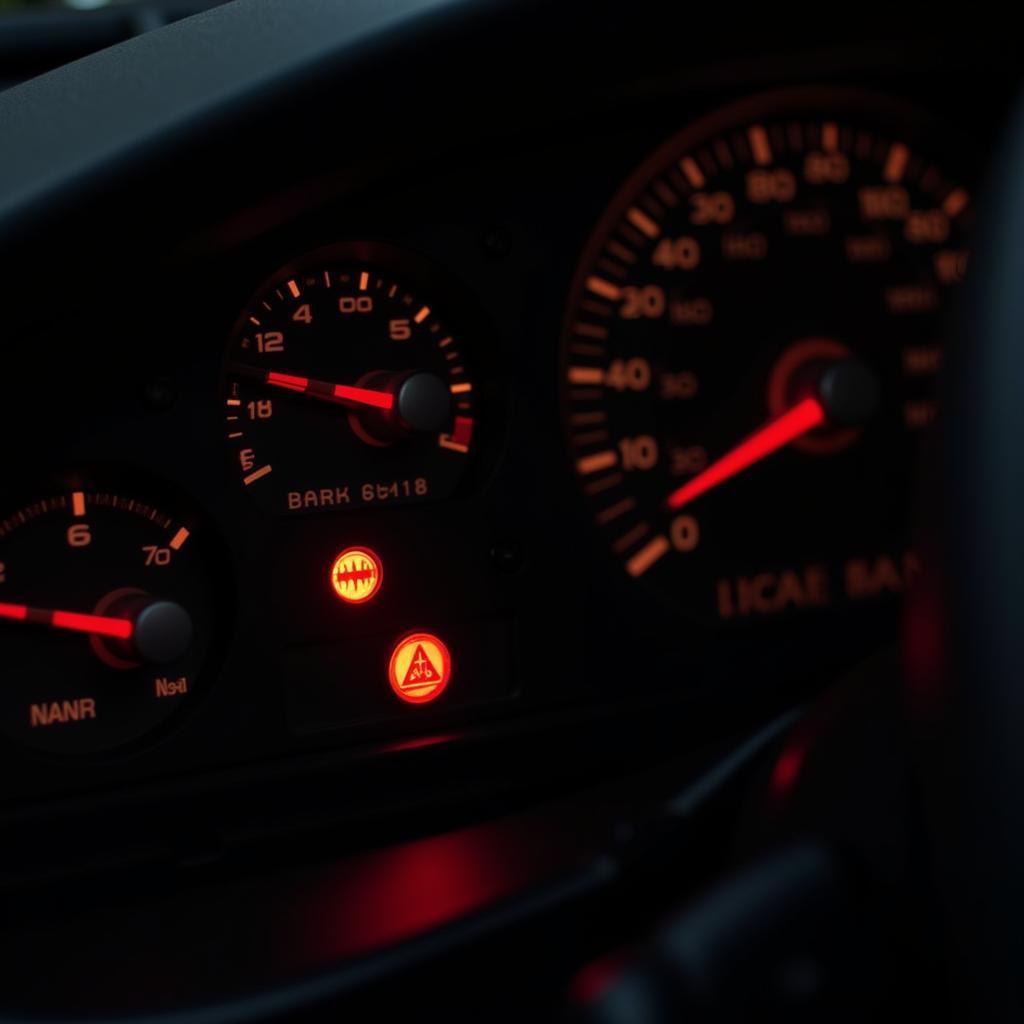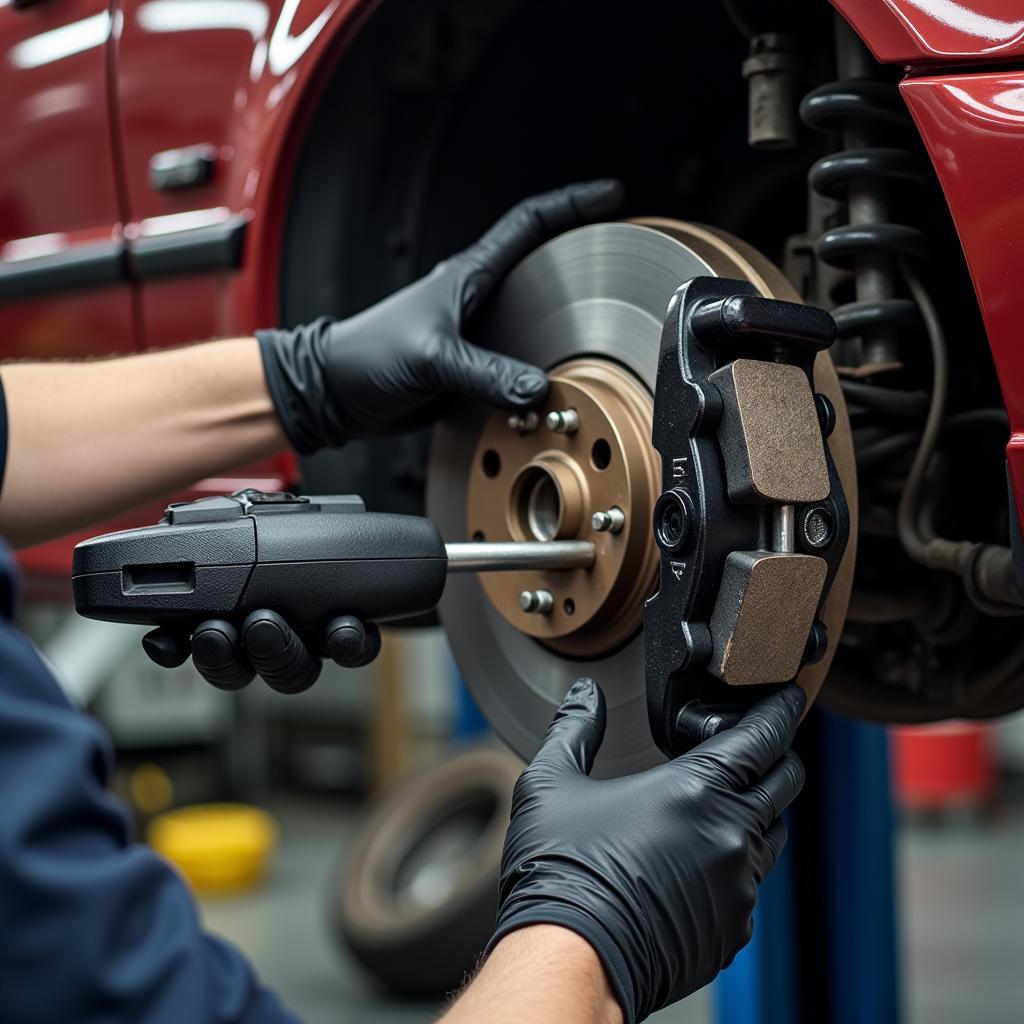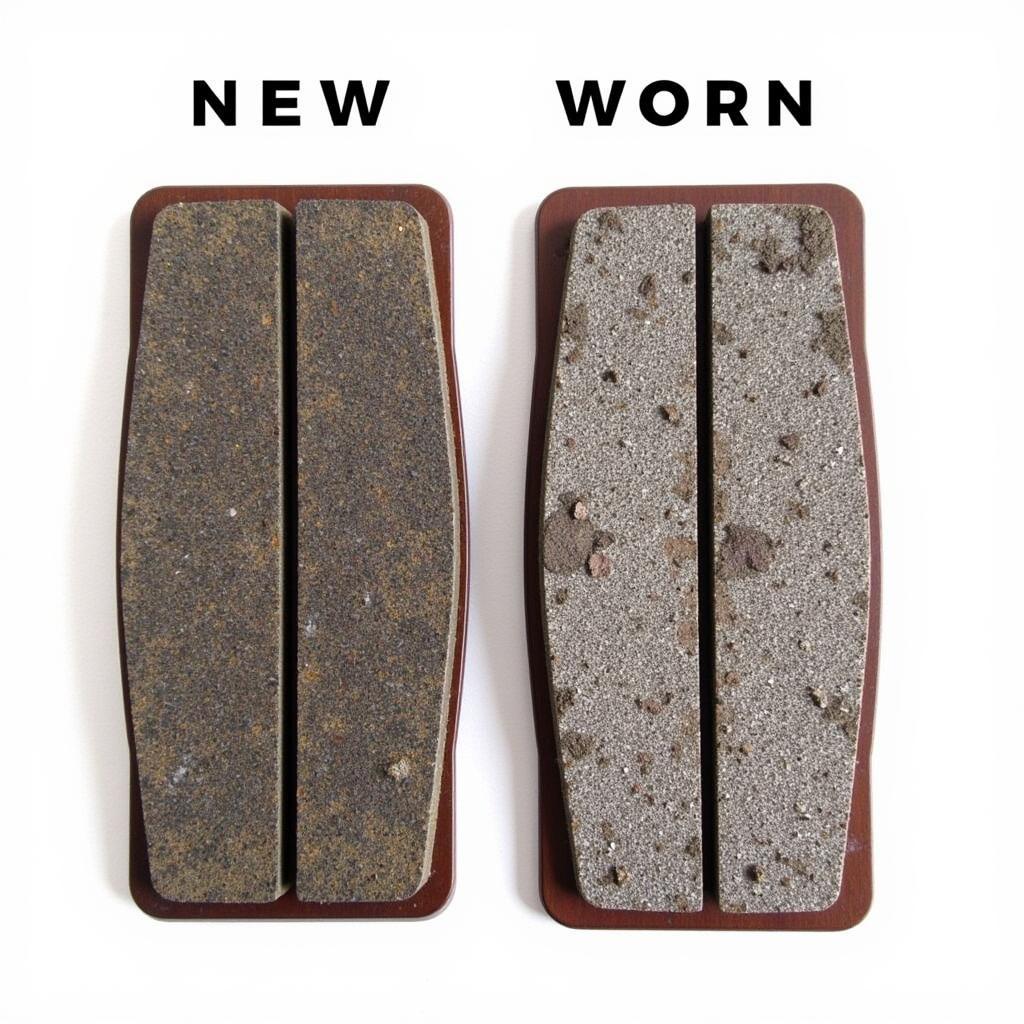The BMW E36 is a legendary car, but even legends can have the occasional hiccup. One common issue that E36 owners may encounter is the dreaded brake warning light on the dashboard. This light can indicate a range of problems, from minor to serious, so it’s crucial to understand what might be causing it and how to address it.
Understanding Your E36’s Brake Warning Light
The brake warning light is part of your BMW’s sophisticated self-monitoring system. When illuminated, it signals a potential issue with your braking system that requires your attention. Don’t panic, but don’t ignore it either.
 BMW E36 Dashboard with Brake Warning Light Illuminated
BMW E36 Dashboard with Brake Warning Light Illuminated
Common Causes of a BMW E36 Brake Warning Light
Several factors can trigger the brake warning light in your E36. Here are some of the most common culprits:
- Worn Brake Pads: This is the most frequent reason for the warning light. E36s are equipped with brake pad wear sensors that trigger the light when the pads reach a certain level of wear.
- Low Brake Fluid: Your car’s braking system relies on hydraulic pressure, and low brake fluid can compromise this pressure, reducing braking efficiency.
- Faulty Brake Light Switch: The brake light switch is responsible for activating your brake lights when you depress the pedal. If it malfunctions, it can also trigger the warning light.
- ABS Sensor Issues: Your E36’s Anti-lock Braking System (ABS) relies on sensors to function correctly. A faulty sensor can disrupt the system and activate the warning light.
- Brake Master Cylinder Problems: The brake master cylinder is the heart of your hydraulic braking system. If it leaks or malfunctions, it can lead to serious braking problems and activate the warning light.
Diagnosing the Problem
“A systematic approach is key to identifying the root cause of the brake warning light in your E36,” says master BMW technician, Hans Schmidt. “Start with the simplest possibilities and work your way through.”
- Check Your Brake Fluid: Open the hood and locate the brake fluid reservoir. Check the fluid level, ensuring it’s within the minimum and maximum markings.
- Inspect Your Brake Pads: If you’re comfortable doing so, you can visually inspect your brake pads for wear. If they appear thin, it’s time for a replacement.
- Listen for Unusual Noises: Unusual noises, like grinding or squealing when braking, can indicate worn brake components and require immediate attention.
When to Seek Professional Help
If you’re unsure about any aspect of inspecting or diagnosing your brake system, it’s crucial to seek help from a qualified mechanic specializing in BMWs. They have the expertise and tools to diagnose and repair any issues accurately.
Resolving Common Brake Warning Light Issues
Here’s a breakdown of common solutions for E36 brake warning light issues:
- Brake Pad Replacement: Worn brake pads are a straightforward fix. Your mechanic will replace the pads, and likely the rotors if they show excessive wear.
- Brake Fluid Flush: Low brake fluid may simply require a top-up, but it’s recommended to have the system flushed and refilled with fresh fluid periodically.
- Brake Light Switch Replacement: A faulty brake light switch is a relatively inexpensive part to replace and can usually be done quickly.
- ABS Sensor Repair or Replacement: Depending on the specific sensor issue, it may be possible to repair it. However, replacement is often the most reliable solution.
- Brake Master Cylinder Repair or Replacement: Due to the critical nature of the brake master cylinder, it’s best left to professionals for inspection, repair, or replacement.
bmw 318i e36 brake pad warning light
Preventing Future Brake Warning Lights
Taking preventative measures can help you avoid unexpected brake issues and keep your E36 running smoothly:
- Regular Brake Inspections: Have your brakes inspected by a qualified mechanic at least once a year or every 10,000-15,000 miles.
- Timely Brake Fluid Changes: Follow the manufacturer’s recommendations for brake fluid changes.
- Be Attentive to Changes in Braking Performance: Pay attention to any changes in how your brakes feel, such as a soft pedal, grinding noises, or pulling to one side. Address these immediately.
 Replacing Brake Pads on a BMW E36
Replacing Brake Pads on a BMW E36
Conclusion
A glowing brake warning light in your BMW E36 is a clear sign that you shouldn’t ignore. Understanding the potential causes and taking prompt action is vital for maintaining your safety and the performance of your vehicle. Whether it’s a simple brake pad replacement or a more complex issue, addressing the problem quickly and efficiently will get you back on the road with confidence.
FAQs about BMW E36 Brake Warning Lights
1. Can I still drive my E36 with the brake warning light on?
It’s highly discouraged. Driving with a brake warning light can be dangerous. It’s best to pull over safely and have your car towed to a mechanic.
2. How much does it cost to fix a BMW E36 brake warning light issue?
The cost varies depending on the cause. A simple brake pad replacement is significantly less expensive than a brake master cylinder replacement.
3. How often should I replace my E36’s brake fluid?
BMW generally recommends replacing your brake fluid every 2 years or 24,000 miles, but consult your owner’s manual for specific guidelines.
4. Can I check and top up my brake fluid myself?
Yes, you can check the level and top it up if necessary. However, be sure to use the correct brake fluid type specified in your owner’s manual.
5. Are aftermarket brake parts okay to use on my E36?
While cheaper, aftermarket parts may not offer the same quality or performance as OEM (Original Equipment Manufacturer) parts. Using high-quality parts is always recommended for your safety.


